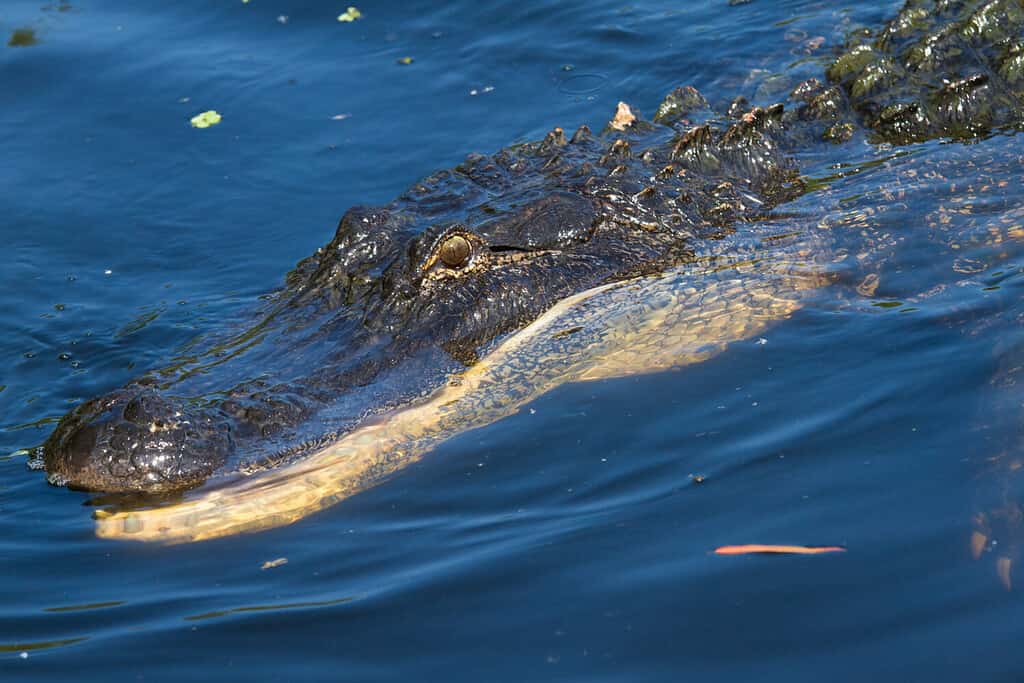The Calcasieu River meanders through the rural forests and bayous of southwestern Louisiana before meeting the sea in the Gulf of Mexico. The National Park Service describes its forested shorelines and sandy banks as ideal habitats for a wide diversity of wildlife species. The river is also popular with anglers, swimmers, campers, hikers, and people who like to boat on the waters. However, those using the water need to be aware that they are not alone! The Calcasieu River is also home to the American alligator – and there are lots of them. Let’s find out why the Calcasieu River is an alligator haven.
Which Habitats Are Preferred By The American Alligator?
The American alligator (Alligator mississippiensis) is a well-known inhabitant of Louisiana and is found in other states including Florida, South Carolina, and Georgia. They will sometimes tolerate brackish water (salty water) but are primarily a freshwater species. They are usually found in swamps and marshes as well as in rivers, ponds, and lagoons. Occasionally, they turn up in fishponds and swimming pools! Females and younger alligators prefer the marshes where they use the vegetation for protection. Older males are found more often in open water.
Alligators, who are generalist carnivores, also choose habitats where there is plenty for them to eat. Juveniles rely on fish and insects but mature gators also eat birds, reptiles, and some mammals.
The Calcasieu River is close to the type of marshland that alligators love. In particular, it runs past the Sabine National Wildlife Refuge which is made up of bayous, lakes, levees, and ponds. This is perfect alligator territory! The total Louisiana alligator population is around two million.
Have Alligators Always Lived In The Calcasieu River?
Alligators have lived on earth for millions of years but they were nearly wiped out of the Calcasieu River area. At the beginning of the 1800s, people started to harvest them for their leather. By the 1950s, there were so few of them left that hunting had to be restricted. Once the alligator hunting season was closed during the 1960s and 1970s, the population stabilized and then increased.
Now, the Louisiana Department of Wildlife and Fisheries manages the alligators as a commercial renewable natural resource.
Are Alligators A Nuisance In The Calcasieu River?

Do not swim in the dark in waters inhabited by alligators.
©Sasha Craig/Shutterstock.com
The Calcasieu River is the alligators’ natural habitat and they have a right to be there. Not all alligators are a nuisance! Any that are less than four feet long fear humans and are very rarely a threat. Those that are longer than four feet may be a problem. They are more likely to be considered a nuisance if they are actively approaching people, are spending time near homes and livestock or repeatedly follow boats and other watercraft. You can report nuisance alligators to the authorities.
The best advice is to back away if you come across an alligator. Closely supervise children and pets when they are playing in or around the water and only swim during daylight hours. Stay aware of your surroundings at all times.
The photo featured at the top of this post is © tswinner/iStock via Getty Images
Thank you for reading! Have some feedback for us? Contact the AZ Animals editorial team.






